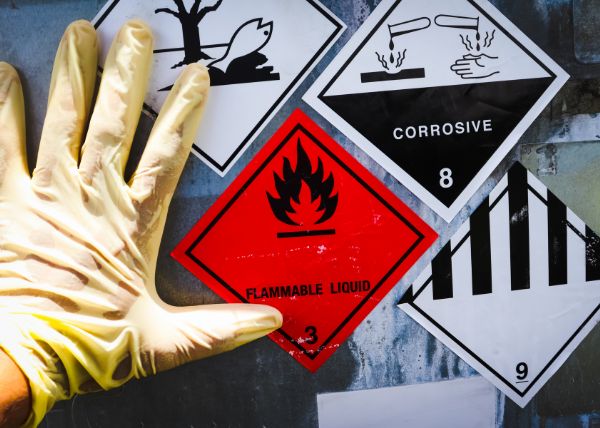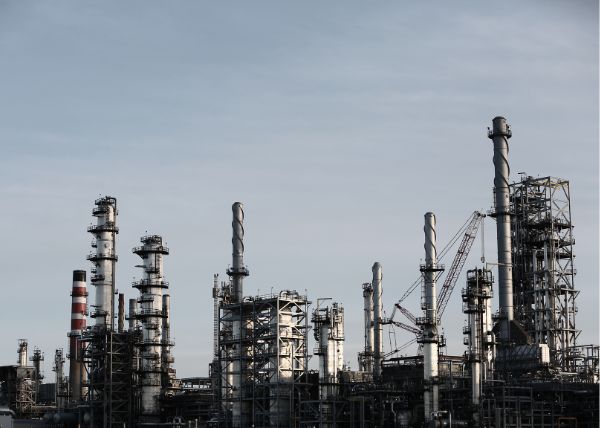
In recent years, the hidden dangers of ethylene oxide, an odorless and colorless gas used in chemical manufacturing, have come under intense scrutiny. Residents of communities near these plants are filing lawsuits, alleging that long-term exposure to this toxic chemical has caused various cancers and other severe health issues. The growing legal battle underscores a critical question: How safe are the emissions from nearby industrial facilities? As more people step forward, the conversation about environmental accountability and public health is becoming impossible to ignore.
Ethylene oxide (EO) is a colorless, flammable gas with a sweet odor, commonly used in various industrial processes. It is a vital component in the production of several chemicals and products, primarily because of its ability to react with other substances to form a range of important compounds.
In chemical manufacturing plants, ethylene oxide serves several key functions:
Despite its widespread use, ethylene oxide poses health risks, including a potential link to cancer, due to its nature as a volatile organic compound. Its usage is tightly regulated to minimize exposure and mitigate associated risks.

In recent years, a quiet yet alarming issue has emerged in communities across the U.S., where residents are beginning to question the safety of living near chemical plants. In places like Charleston, West Virginia, ethylene oxide—a gas commonly used in industrial processes—has been linked to a spike in cancer cases and other serious health conditions. This gas, emitted by nearby facilities, has prompted numerous lawsuits from affected individuals, who allege that long-term exposure to these emissions has caused irreparable harm.
One such case involves Cathy Flint, a Charleston resident diagnosed with multiple myeloma, a severe cancer of the plasma cells. For years, Flint lived less than 750 feet from a chemical plant, unaware of the potential dangers. It wasn’t until she received a questionnaire from environmental lawyers that she started to connect the dots between her illness and the nearby plant's emissions.
“It was just part of life in this valley. There’s plants everywhere,” said Flint, a resident there for nearly 30 years. “I didn’t really think much about it. I thought it was safe. Evidently, it wasn’t.”
Flint’s story is not unique; she is one of many now taking legal action against companies that have allegedly exposed communities to harmful levels of ethylene oxide.
The issue goes beyond individual lawsuits. Environmental groups are also challenging the Environmental Protection Agency (EPA), arguing that the agency’s updated emissions standards do not go far enough to protect residents. Although the EPA has made strides in reducing ethylene oxide emissions, critics contend that millions of people remain at risk of developing cancer from long-term exposure to the gas.
The growing number of lawsuits reflects a broader concern: Are industrial plants adequately protecting the communities in which they operate? As these legal battles unfold, they underscore the importance of holding companies accountable for the health impacts of their operations. For those affected, the fight for justice is just beginning, and the outcomes of these cases could have far-reaching implications for public health and environmental safety across the nation.
If you or a loved one has been affected by toxic chemical exposure, it’s crucial to seek legal advice. Contact Accident Aide today to connect with experienced personal injury lawyers who can help you navigate the complexities of these cases and pursue the compensation you deserve.
Living near industrial facilities can sometimes expose residents to harmful chemicals, leading to serious health issues such as cancer, respiratory problems, and other chronic conditions. If you or a loved one has been affected by toxic chemical exposure, navigating the legal landscape can be overwhelming. This is where a personal injury lawyer specializing in toxic exposure cases can make a significant difference. Here’s how a lawyer can help you through this challenging time:
A seasoned attorney will begin by thoroughly evaluating your case to determine its viability. They will assess the extent of your exposure, the severity of your health issues, and the potential link between the chemicals and your condition. This initial evaluation is crucial in understanding the strengths and weaknesses of your case.
Establishing the source of toxic exposure is a complex process that requires detailed investigation. Lawyers have the resources and experience to trace the origins of the chemicals, identify responsible parties, and gather evidence from various sources, including environmental reports, company records, and testimonies.
Proving a toxic exposure case involves collecting substantial evidence to demonstrate causation and liability. Attorneys will work to obtain medical records, environmental data, and witness statements. They may also collaborate with medical experts and environmental scientists to strengthen your case.
Toxic exposure cases often involve intricate legal issues, including regulatory compliance, liability laws, and environmental regulations. Personal injury lawyers are well-versed in these areas and can navigate the complexities to build a compelling case on your behalf.
To win a toxic exposure lawsuit, you must prove that the defendant’s negligence or wrongful actions directly caused your health issues. Lawyers help establish liability by demonstrating how the company failed to adhere to safety standards, neglected proper handling of hazardous materials, or knowingly exposed the community to dangerous chemicals.
Determining the right amount of compensation involves considering various factors, such as medical expenses, lost wages, pain and suffering, and future treatment costs. Experienced attorneys ensure that you receive fair compensation that fully addresses both your current and future needs.
Dealing with insurance companies and large corporations can be daunting. Lawyers act as your advocate, handling all communications and negotiations to ensure that your rights are protected and that you receive the compensation you deserve without the stress of dealing with these entities directly.
If a fair settlement cannot be reached through negotiations, your lawyer will represent you in court. They will present your case, cross-examine witnesses, and argue on your behalf to achieve a favorable verdict.
Facing a toxic exposure case can be emotionally taxing. A compassionate lawyer not only provides legal support but also offers guidance and reassurance throughout the process, helping you stay focused on your recovery.
Legal cases are bound by strict deadlines, known as statutes of limitations. Missing these deadlines can jeopardize your case. Lawyers ensure that all necessary paperwork is filed on time, safeguarding your right to pursue compensation.
At Accident Aide, we understand the profound impact that toxic chemical exposure can have on your life. Our network of experienced personal injury lawyers specializes in environmental and toxic exposure cases, offering you the tools and support needed to seek justice. We connect you with legal professionals who are dedicated to holding responsible parties accountable and securing the compensation you deserve.
Don’t navigate this complex journey alone. If you or a loved one has been affected by toxic chemical exposure, contact Accident Aide today to connect with a qualified personal injury lawyer who can help you take the first step towards recovery and justice.